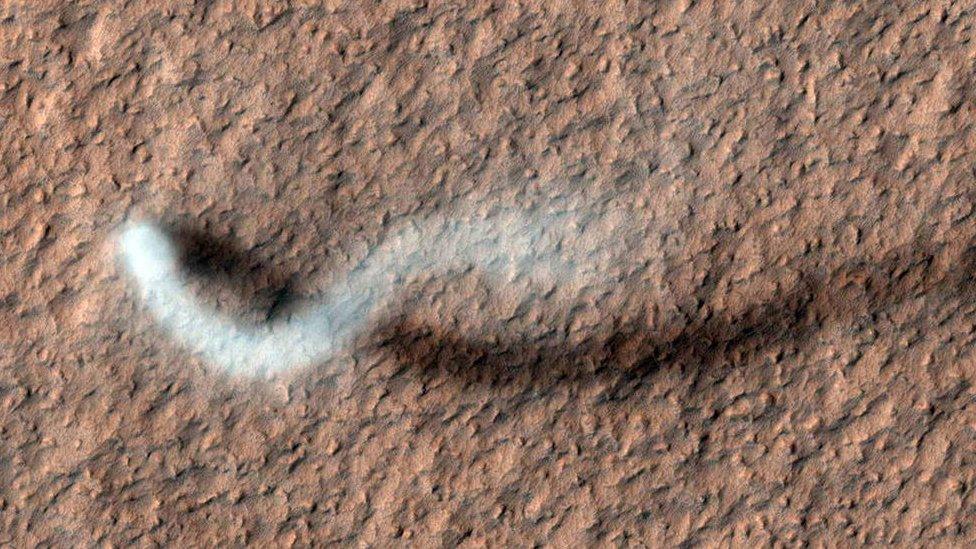Fifteen years of Nasa's Mars Reconnaissance Orbiter in pictures
- Published

This week Nasa marked 15 years since the launch of the Mars Reconnaissance Orbiter (MRO). It is one of the oldest spacecraft at the Red Planet and has given us stunning images of avalanches, craters, whirlwinds and much more. This image was taken 185 miles above the ground. Nasa say: "The length of this whirlwind's shadow indicates that it was more than half a mile high."
Three cameras are on board the MRO - the Mars Color Imager (MARCI), which has a fisheye lens. The Context Camera (CTX), which gives a 19-mile-wide black-and-white view of Mars' terrain and the High-Resolution Imaging Science Experiment (HiRISE) capable of snapping fine details. This 30-metre wide crater was first spotted by CTX, before HiRISE was able to take a closer look. Nasa say: "Mars has a thin atmosphere – just 1% as dense as Earth's. As a result, there's less of a protective barrier to burn up space debris. That means more larger meteors make it through the Red Planet's atmosphere than Earth's. CTX has detected over 800 new impact craters during MRO's mission."
This image was taken by CTX and shows a map of the travels of the Mars Opportunity rover, nicknamed 'Oppy'. It shows the 26.2 miles the rover had travelled before its mission ended last year. Scientists are using the images to make maps for "future human and robotic missions as well as to chart the progress of rovers on the ground."
Scientists add colour to the images to help highlight details - here dunes and ripples are seen on Mars' surface. MRO's deputy project scientist Leslie Tamppari said: "Many of these landforms are migrating, as they do on Earth: Sand grain by sand grain, they're carried by wind, crawling across the planet over millions of years." She added "The more we look, the more we discover... we thought the atmosphere was so thin that there was almost no sand motion and most dune movement happened in the ancient past."
HiRISE alone has captured more than six million images and they are not all of Mars, this one is of the Earth and the Moon.
Mars has two moons, both moons are named after ancient Greek gods, Deimos, and Phobos. This is Phobos, it is around 13 miles across. Nasa say despite its small size it is very interesting, "is it a captured asteroid, or a chunk of Mars that broke off after a massive impact?" A Japanese mission is scheduled to launch to Phobos in the near future, and the Moon has been proposed as a staging ground for astronauts before they go to Mars. Happy 15 years on Mars MRO, keep sending us great pictures!
- Published6 May 2020
- Published9 April 2020
- Published8 June 2018
